Fire Tools
Posted by Mike Trent on Mar 19, 2024; 12:44am
URL: http://c-sng-discussion-forum.254.s1.nabble.com/Fire-Tools-tp19512.html
Greetings. Thanks for your patience. It takes forever, it seems, to upload pictures into the Forum, particularly in the large size. It was suggested that I make some comments about the fire tools that were so common on C&S locomotives. My information on these, comes from old fireman Doug Schnarbush who worked the West End between Como and Leadville from 1927 to abandonment in 1937. It was a real privilege to be able to sit and talk with him, as often as I did. On several trips, Todd Hackett was with me and I believe John Coker and Joe Crea were with us at least once.
Because of the nature of operations on the C&S, multiple engines were used on the extra freights and as a result, slow speeds were the rule, not the exception. Due to the slow speeds on the freights, low draft was a problem causing cinders to clog the flues and the grates formed clinkers. #74 was notorious for clinkers over the #4 axle under the firebox. I've mentioned before that I bought my first On3 locomotive in January, 1980, at a time when I was also involved with the cosmetic restoration of #74 in Boulder's Central Park. So I had unrestricted access to the engine through the process of rebuilding my model. I also learned the importance of studying details in every photograph I could get my hands on. One of the things that became almost an amusing Easter Egg hunt was to identify the numerous devices that were used to help fire the engine. I've never tried to find these on many other engines, but most were equipped with fewer tools than #74.
Here is a brief description of the tools that were commonly used in varying combinations on locomotives.
Auger. This is a comparatively long straight tool with a screw like end. These were used to bore the flues from the front end. Every Locomotive on every train on the West End stopped for water and coal and to bore the flues. Not to do so caused all sorts of problems.
These are very easy to identify because they are so long. They might be found resting in the handrail stanchions on the left side, or hanging on the left side of the tender, Often, the augers were hung from a hook on the front of the left side of the tender, and the bottom rested on the flooring if it extended beyond the cistern. Even in On3, I haven't come up with a way to represent the screw. Last week, Chris Walker posted a picture of #9 at Como where the fireman is carrying the coal gate to the rear. If you look for that picture again, the auger is hanging on the side and you can see the screw on the end. The other end, typical of most of these tools, has a formed circular handle, used for working the tool and for storage.
Rake. This is also a tool of varied length for use in spreading the fire and also dragging clingers free. These have a U shaped end welded to the rod.
Clinker Hook. These are also tools of varied length with a 90 degree bend at the end. These were used to try to keep clinkers from forming in the firebox. These might be most commonly found above the coal gate. The handle would be stored with the round handle on the left side, so it would not burn the fireman's hand if he needed it for a troublesome return to the fire. The hot end would be on the right side behind the engineer. Clinkers, if you are unaware, are sometimes formed from improperly burning and becomes a fused mess. This can also choke the draft through the grates. Sometimes these are found on the left side of the tender with the longer auger.
Corner Hook. This is a shorter hook that is meant to be used in the rear corners. These are not unusual to see hanging from a stanchion on the left side behind the smokebox.
#74 3/4 Right Front: Corner hook below the sand dome, and what used to be a long rake for the long firebox. The U is missing. Hasn't been a priority to fix it. But I will when Ken, the fireman bitches about it. Again.
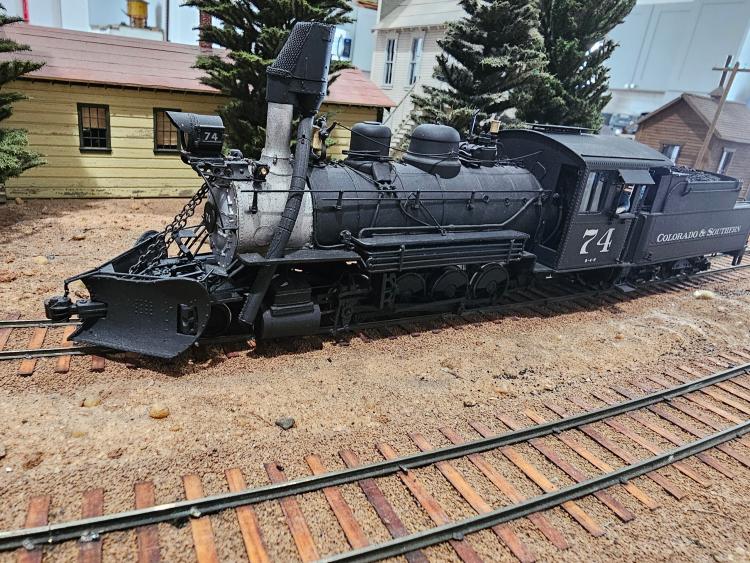
#74 3/4 Left Rear Elevated: A medium rake stored over the Coal Gate. The long auger in on it's hooks and extends beyond the bunker as seen in the first picture.
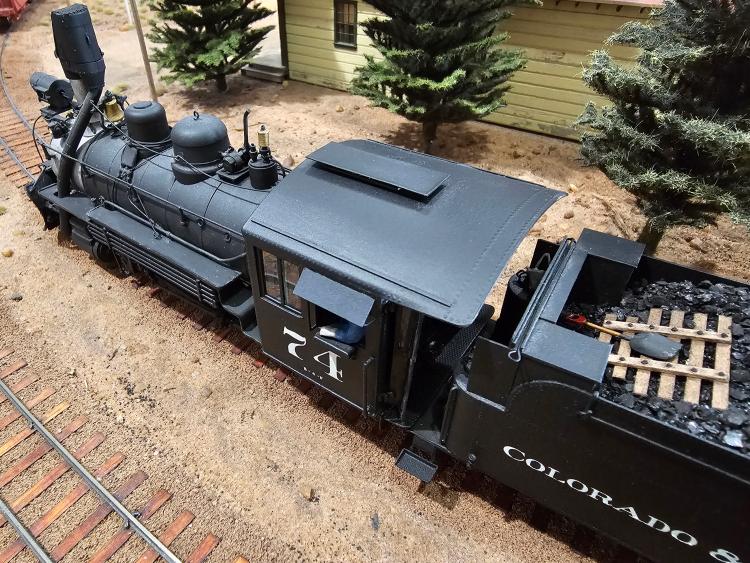
#8 Left side Tender: Both a clinker hook and auger on the tender. Small hook over the coal gate.
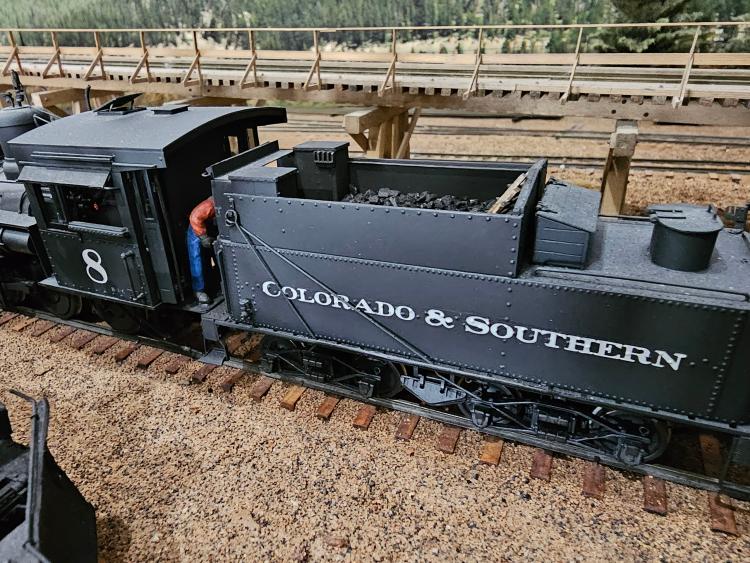
#73, #71 Left Side: Augers on the tenders, corner hooks in the stanchions, Both have longer hooks in the stanchions too.
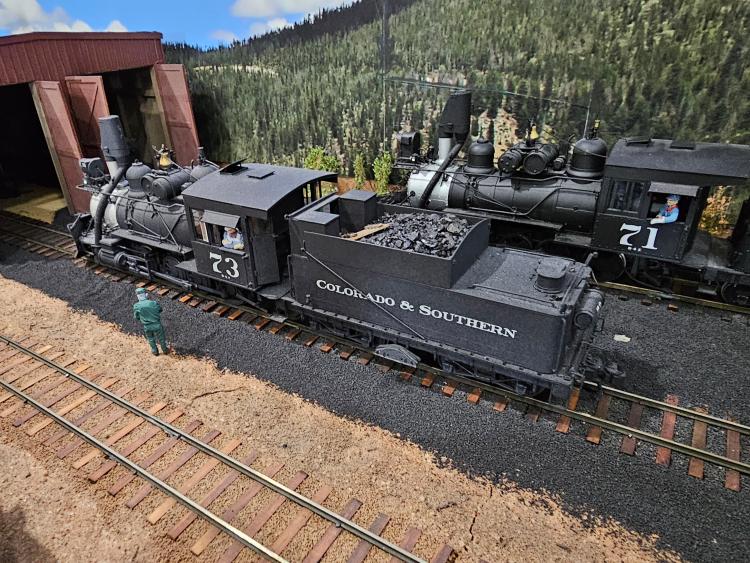
#60 Left Side: Auger on the side, a fairly long medium hook over the coal gate, and a long hook in the stanchions. Note the round cover on the roof for a canvas fire hose. I have modified the left side branch pipe so water can be pumped from the injector. It helps to have worked on #60 too! Also cut down the flooring to correct width. Jan Rons made me do that. And added the second hatch. Carry an OMI plow. This tender cistern is dimensionally identical to #6.
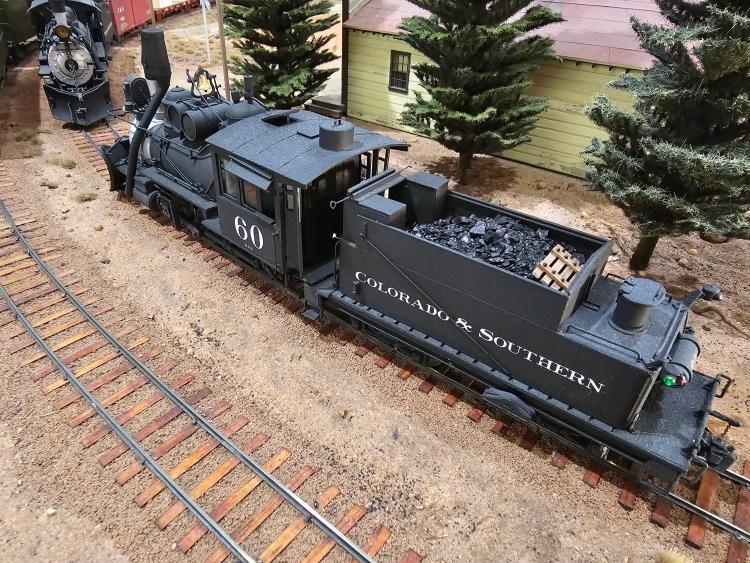
BR 4 62 Scoop: This sideways picture shows the scoop my Dad used on the last run of C&S Steam in 1962. #638 from Denver to Trinidad, where it still sits on display. It is stamped
"BR 4 62". Burlington Route #4 62" I paint all my scoops like this.
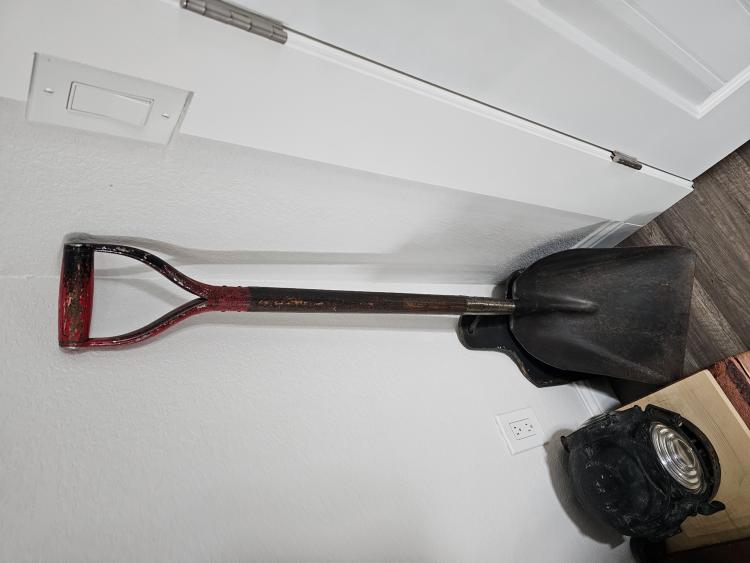
URL: http://c-sng-discussion-forum.254.s1.nabble.com/Fire-Tools-tp19512.html
Greetings. Thanks for your patience. It takes forever, it seems, to upload pictures into the Forum, particularly in the large size. It was suggested that I make some comments about the fire tools that were so common on C&S locomotives. My information on these, comes from old fireman Doug Schnarbush who worked the West End between Como and Leadville from 1927 to abandonment in 1937. It was a real privilege to be able to sit and talk with him, as often as I did. On several trips, Todd Hackett was with me and I believe John Coker and Joe Crea were with us at least once.
Because of the nature of operations on the C&S, multiple engines were used on the extra freights and as a result, slow speeds were the rule, not the exception. Due to the slow speeds on the freights, low draft was a problem causing cinders to clog the flues and the grates formed clinkers. #74 was notorious for clinkers over the #4 axle under the firebox. I've mentioned before that I bought my first On3 locomotive in January, 1980, at a time when I was also involved with the cosmetic restoration of #74 in Boulder's Central Park. So I had unrestricted access to the engine through the process of rebuilding my model. I also learned the importance of studying details in every photograph I could get my hands on. One of the things that became almost an amusing Easter Egg hunt was to identify the numerous devices that were used to help fire the engine. I've never tried to find these on many other engines, but most were equipped with fewer tools than #74.
Here is a brief description of the tools that were commonly used in varying combinations on locomotives.
Auger. This is a comparatively long straight tool with a screw like end. These were used to bore the flues from the front end. Every Locomotive on every train on the West End stopped for water and coal and to bore the flues. Not to do so caused all sorts of problems.
These are very easy to identify because they are so long. They might be found resting in the handrail stanchions on the left side, or hanging on the left side of the tender, Often, the augers were hung from a hook on the front of the left side of the tender, and the bottom rested on the flooring if it extended beyond the cistern. Even in On3, I haven't come up with a way to represent the screw. Last week, Chris Walker posted a picture of #9 at Como where the fireman is carrying the coal gate to the rear. If you look for that picture again, the auger is hanging on the side and you can see the screw on the end. The other end, typical of most of these tools, has a formed circular handle, used for working the tool and for storage.
Rake. This is also a tool of varied length for use in spreading the fire and also dragging clingers free. These have a U shaped end welded to the rod.
Clinker Hook. These are also tools of varied length with a 90 degree bend at the end. These were used to try to keep clinkers from forming in the firebox. These might be most commonly found above the coal gate. The handle would be stored with the round handle on the left side, so it would not burn the fireman's hand if he needed it for a troublesome return to the fire. The hot end would be on the right side behind the engineer. Clinkers, if you are unaware, are sometimes formed from improperly burning and becomes a fused mess. This can also choke the draft through the grates. Sometimes these are found on the left side of the tender with the longer auger.
Corner Hook. This is a shorter hook that is meant to be used in the rear corners. These are not unusual to see hanging from a stanchion on the left side behind the smokebox.
#74 3/4 Right Front: Corner hook below the sand dome, and what used to be a long rake for the long firebox. The U is missing. Hasn't been a priority to fix it. But I will when Ken, the fireman bitches about it. Again.

#74 3/4 Left Rear Elevated: A medium rake stored over the Coal Gate. The long auger in on it's hooks and extends beyond the bunker as seen in the first picture.

#8 Left side Tender: Both a clinker hook and auger on the tender. Small hook over the coal gate.

#73, #71 Left Side: Augers on the tenders, corner hooks in the stanchions, Both have longer hooks in the stanchions too.

#60 Left Side: Auger on the side, a fairly long medium hook over the coal gate, and a long hook in the stanchions. Note the round cover on the roof for a canvas fire hose. I have modified the left side branch pipe so water can be pumped from the injector. It helps to have worked on #60 too! Also cut down the flooring to correct width. Jan Rons made me do that. And added the second hatch. Carry an OMI plow. This tender cistern is dimensionally identical to #6.

BR 4 62 Scoop: This sideways picture shows the scoop my Dad used on the last run of C&S Steam in 1962. #638 from Denver to Trinidad, where it still sits on display. It is stamped
"BR 4 62". Burlington Route #4 62" I paint all my scoops like this.

| Free forum by Nabble | Edit this page |